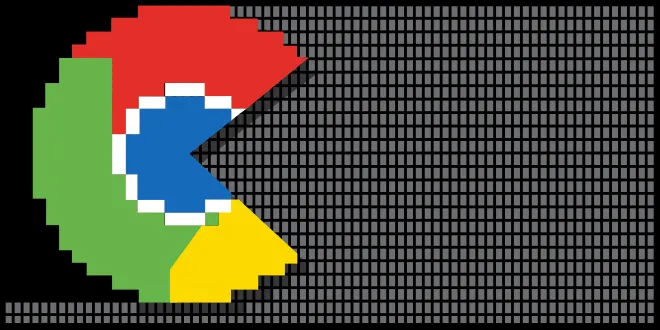Hey, Dave here from Starscape SEO. Recent leaks of Google’s Content Warehouse API documentation have provided unprecedented insights into the internal workings of Google’s search ranking systems.
These revelations, first handed over to Rand Fishkin of Moz, who has long been getting flack from Google for his theories on their algorithm, go on to expose several discrepancies between Google’s public statements and their actual practices, causing a significant stir within the SEO community.
This blog will delve into these contradictions and explore their implications for SEO strategies. Oh, and I am aware that everyone is doing a similar analysis – be that as it may, let’s hop in and take a look at what seems to have been uncovered, despite Google not confirming the veracity of the leak (why would they, it makes them look like liars – it is their Secret Sauce, after all)…

Clicks in Rankings: A Hidden Factor

For years, Google has maintained that clicks do not directly influence search rankings.
This stance was reiterated by Google spokespeople like Gary Illyes, who stated that using clicks directly in rankings would be a mistake due to potential manipulation.
Gary Illyes’ statement:
“Using clicks directly in ranking would be a mistake.”
However, the leaked documentation paints a different picture.
It reveals the existence of the NavBoost ranking system, which incorporates click-driven measures to adjust search rankings.
This system evaluates various types of clicks, including “good clicks,” “bad clicks,” and “last longest clicks,” and normalizes this data to prevent any single signal from disproportionately affecting the rankings.
NavBoost Module Description:
“Click and impression signals for Craps,” including metrics like “bad clicks,” “good clicks,” and “last longest clicks.”
Technical Documentation Excerpt:
badClicks: Type: float(), default: nil
goodClicks: Type: float(), default: nil
lastLongestClicks: Type: float(), default: nil
unsquashedClicks: Type: float(), default: nilThis sophisticated approach to integrating user interaction metrics into search rankings directly contradicts Google’s public stance, highlighting the significant role of click data in their algorithms.
The Myth of Domain Authority

Google spokespeople have often dismissed the concept of “domain authority” as a ranking factor.
John Mueller and Gary Illyes have both asserted that Google does not use a metric similar to Moz’s Domain Authority.
John Mueller’s statement:
“We don’t have website authority score.”
Yet, the leaked documentation reveals the existence of a metric called siteAuthority within the Compressed Quality Signals, which influences the overall authority of a site.
Technical Documentation Excerpt:
siteAuthority: converted from quality_nsr.SiteAuthority, applied in Qstar.This revelation confirms that Google does calculate and use an internal site authority metric, contradicting their public denials and suggesting that building site authority remains crucial for SEO.
The Sandbox Effect: Fact or Fiction?

Google has consistently denied the existence of a “sandbox” for new websites, a supposed probationary period where new sites are temporarily suppressed in search rankings.
John Mueller’s statement:
“There is no sandbox.”
However, the PerDocData module in the leaked documentation mentions an attribute called hostAge, which is specifically used “to sandbox fresh spam in serving time.”
This indicates that Google does implement a form of sandboxing, contrary to their public denials.
Technical Documentation Excerpt:
hostAge: used to sandbox fresh spam in serving time.Understanding this sandbox effect is essential for new websites, as it impacts initial search visibility and necessitates strategic planning to navigate this probationary period.
Chrome Data in Rankings

Google representatives have claimed that data from Chrome is not used in the ranking of search results.
Matt Cutts and John Mueller have both reinforced this position.
Matt Cutts’ statement:
“We do not use Chrome data in our search algorithm.”
In contrast, the leaked documentation contains multiple references to the use of Chrome data for ranking purposes.
Specifically, attributes related to Chrome views are mentioned in modules related to page quality scores and sitelink generation.
Technical Documentation Excerpt:
chromeInTotal: Site-level Chrome views.A leaked internal presentation from May 2016 on the RealTime Boost system also indicates that Chrome data was coming to search.
This revelation underscores the importance of optimizing for user experience on Chrome browsers.
Implications for SEO

Prioritize User Engagement Metrics
With clicks and user interaction metrics playing a critical role, SEOs should focus on improving click-through rates (CTR) and dwell time.
Build Site Authority
Establishing a site as an authoritative source remains crucial. Google may not use third-party metrics like Moz’s Domain Authority, but they do calculate and use their internal site authority metrics.
Understand the Sandbox Effect
New websites should be aware of the sandbox effect, impacting their initial search visibility.
Strategic planning is essential to navigate this probationary period.
Leverage Chrome Data:
Optimizing for user experience on Chrome browsers can have indirect benefits for search rankings, given the use of Chrome data in Google’s algorithms.
Conclusion

The leaked documentation starkly contrasts with many of Google’s public statements, shedding light on the true nature of their ranking algorithms. Of course, you also need to consider that this is a “leak”, and therefore everything must be taken with a grain of salt.
Still, if there is any validity to the leak, and it seems that there is, these revelations underscore the importance of continuous experimentation and adaptation in SEO strategies, independent of official Google communications.
By integrating these insights into SEO practices, professionals can align more closely with the actual mechanisms driving Google’s search results, ultimately enhancing their ability to achieve higher rankings and greater visibility.
Understanding these discrepancies allows SEOs to better navigate the complexities of search rankings and optimize their efforts more effectively.
This newfound knowledge empowers the SEO community to refine their strategies and achieve greater success in the ever-evolving landscape of search engine optimization.

One Reply on “A Basic Analysis of Google’s Controversial Algorithm Leak”